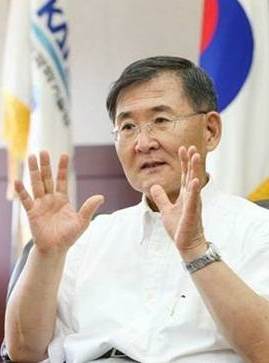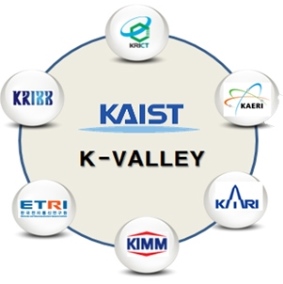On July 18, KAIST President Sung Mo Kang announced at the press conference of Ministry of Science ICT and Future Planning in Gwacheon, the debut of the innovation cluster K-Valley. In sync with Korea’s trending creative economy agenda, it is expected to generate innovative synergy between KAIST and government research institutes spread across the Daedeok Valley.

Daedeok Valley has been serving as the research hub of Korea since the 1970s, and has been a major economic powerhouse ever since. By launching K-Valley, KAIST will function as an innovation center alongside government research institutes to rev-up today’s convergence and innovation driven economy. Notable institutes making major technological contributions to the valley include Electronics and Telecommunications Research Institute (ETRI), Korea Aerospace Research Institute (KARI), and Korea Atomic Energy Research Institute (KAERI). This project is not only limited to research oriented collaboration, but also focuses on converging research fields, nurturing talents, pipelining fundamental research to practice, and supporting company startups.

To realize this plan, specific programs lie ahead. The Professional Creativity Master’s Program will be established to raise needed specialists by providing them with practical skills and collaboration between government research institutes and startup companies. To enhance collaboration between academia and research institutes, senior researchers in research institutes will be eligible to apply for open research professor positions at KAIST. Conversely, professors at KAIST will be able to have dual research positions at research institutes as well.
To improve the pipeline from research to practice, the Research, Education, Development & Business (RED&B) initiative will also be conducted in the K-Valley project. A committee will be concerted between KAIST and research institute heads to coordinate and select cooperative research that show promising social impact. Resulting research will effectively be moved to practice via KAIST’s Office of University-Industry Cooperation or ETRI’s Technology Commercialization Division by supporting industrialization.
Another major agenda include establishing the KAIST Insitute-2 (KI-2) Building at the KAIST Sejong Campus. The KI-2 Building is to elevate research projects - done at the KAIST Institute (KI) Building of the KAIST Main Campus - to an applicable stage and drive it towards commercialization by means of technology transfers and supporting startups. The Graduate Program for Future Strategy will also be established at the Sejong Campus to provide future strategists and public administrators with necessary skills for future policy making.

